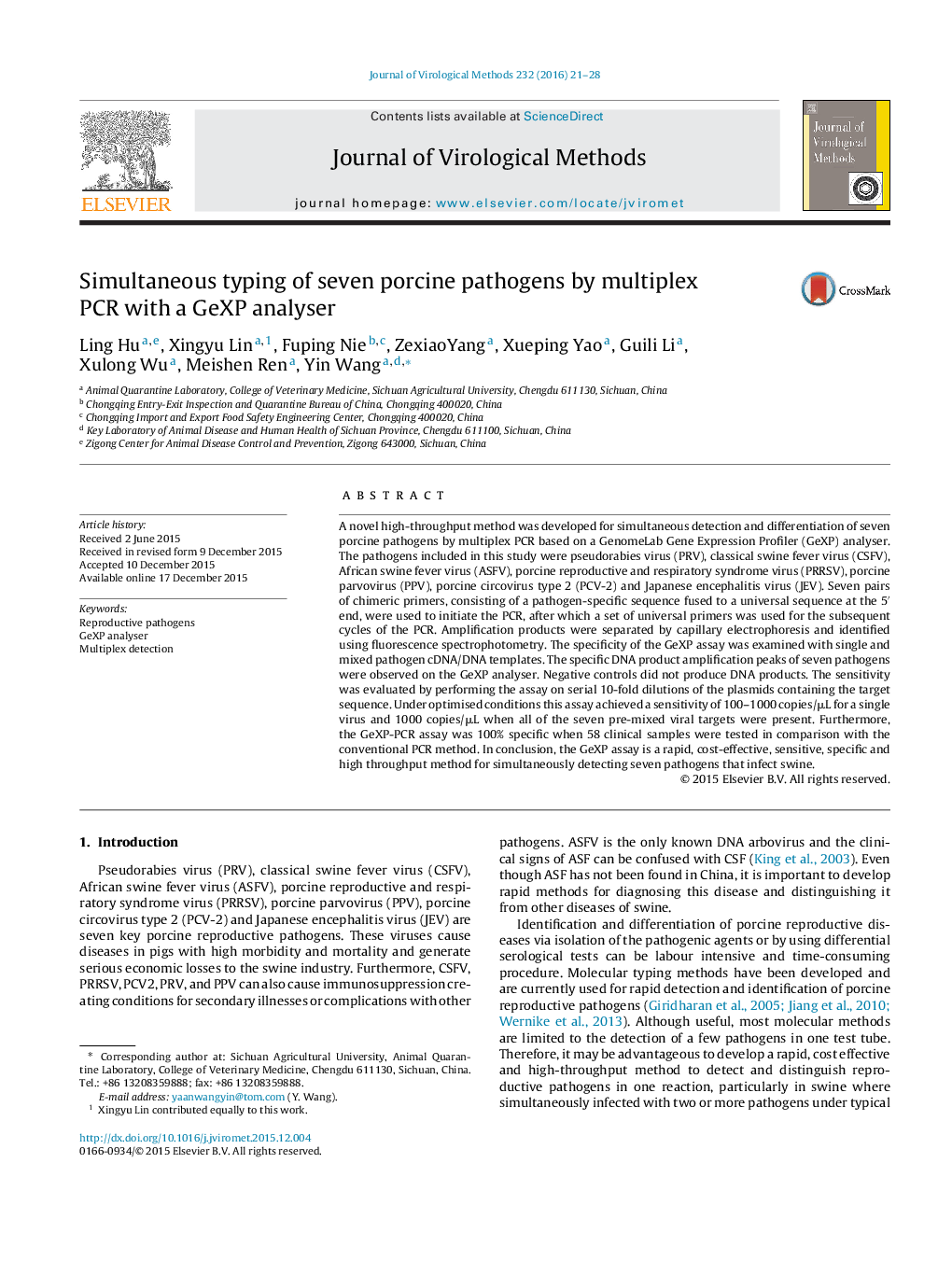| Article ID | Journal | Published Year | Pages | File Type |
|---|---|---|---|---|
| 3406582 | Journal of Virological Methods | 2016 | 8 Pages |
•This method can diagnose and simultaneously distinguish seven porcine pathogens.•Seven pairs of chimeric primers and one set of universal primers were used.•This method is specific, rapid, high throughput and has high sensitivity.•The method has broad application for use.
A novel high-throughput method was developed for simultaneous detection and differentiation of seven porcine pathogens by multiplex PCR based on a GenomeLab Gene Expression Profiler (GeXP) analyser. The pathogens included in this study were pseudorabies virus (PRV), classical swine fever virus (CSFV), African swine fever virus (ASFV), porcine reproductive and respiratory syndrome virus (PRRSV), porcine parvovirus (PPV), porcine circovirus type 2 (PCV-2) and Japanese encephalitis virus (JEV). Seven pairs of chimeric primers, consisting of a pathogen-specific sequence fused to a universal sequence at the 5′ end, were used to initiate the PCR, after which a set of universal primers was used for the subsequent cycles of the PCR. Amplification products were separated by capillary electrophoresis and identified using fluorescence spectrophotometry. The specificity of the GeXP assay was examined with single and mixed pathogen cDNA/DNA templates. The specific DNA product amplification peaks of seven pathogens were observed on the GeXP analyser. Negative controls did not produce DNA products. The sensitivity was evaluated by performing the assay on serial 10-fold dilutions of the plasmids containing the target sequence. Under optimised conditions this assay achieved a sensitivity of 100–1000 copies/μL for a single virus and 1000 copies/μL when all of the seven pre-mixed viral targets were present. Furthermore, the GeXP-PCR assay was 100% specific when 58 clinical samples were tested in comparison with the conventional PCR method. In conclusion, the GeXP assay is a rapid, cost-effective, sensitive, specific and high throughput method for simultaneously detecting seven pathogens that infect swine.
